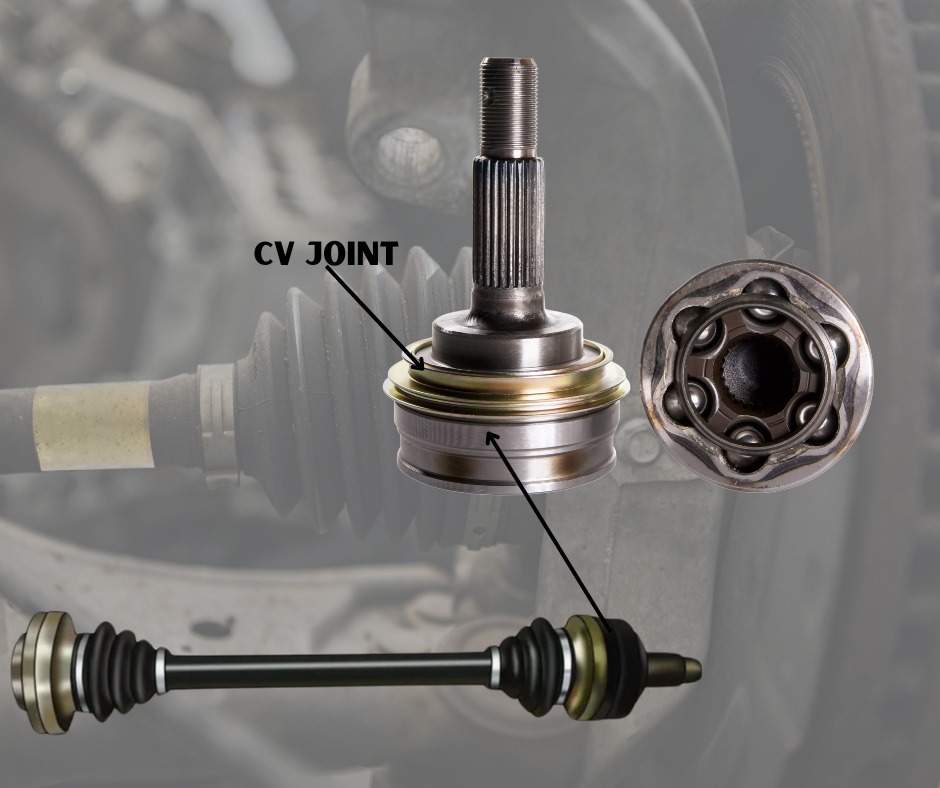Functions of a CV Joint in Your Car

Explore how the unsung hero of your vehicle's drivetrain, the CV joint, ensures a smooth and reliable ride.
What is a CV Joint and Why is it Essential?
A Constant Velocity (CV) joint is a critical component found in front-wheel drive and many all-wheel drive vehicles. Its primary function is to transmit power from the vehicle's transmission and differential to the wheels, allowing for a range of motion in all directions while maintaining a constant rotational speed without any significant increase in friction or play. This is essential for maintaining a smooth ride, consistent handling, and ensuring the longevity of the vehicle's drivetrain components, particularly during steering and suspension movement.
The importance of the CV joint cannot be overstated, as it directly affects the vehicle's performance and safety. A well-functioning CV joint ensures that power is delivered to the wheels without interruption, which is crucial for maintaining control and stability while driving.
The Mechanics Behind CV Joints: How They Work
CV joints are designed to handle the complex task of transferring torque from the engine to the wheels at a constant velocity, irrespective of the angle of the joint. They must accommodate the up and down motion of the suspension, as well as the steering movements of the vehicle. To achieve this, CV joints are equipped with a series of bearings and cages that allow for fluid movement and flexibility. The outer joint handles the transfer of power through a range of steering angles, while the inner joint compensates for changes in suspension.
The intricate design of CV joints enables them to adjust to the various angles and motions without compromising the speed and force of the vehicle. This is achieved by maintaining a consistent rotational speed and efficiently handling the torque, which is vital for the vehicle's agility and responsiveness.
Types of CV Joints and Their Specific Roles
There are two primary types of CV joints used in vehicles: the ball-type or Rzeppa joint, which is commonly used as the outer joint in most front-wheel drive cars, and the tripod or plunging type joint, which is typically utilized as the inner joint. The ball-type CV joint is adept at handling the wide range of motion required by the steering mechanism, while the tripod joint allows for the length changes in the driveshaft due to the suspension's motion.
Each type of CV joint is engineered to excel in its specific role, ensuring that the vehicle's drivetrain operates efficiently. The correct functioning of these joints is critical for a car's handling and overall drive quality, which is why understanding their specific roles is important for vehicle maintenance and troubleshooting.
Common Symptoms of CV Joint Failure
Recognizing the symptoms of CV joint failure is crucial for any car owner. Common signs include a loud clicking noise when turning, which typically indicates that the CV joint is worn and needs to be replaced. A grease leak from the CV boot, which protects the joint, can also be a telltale sign that there is a problem. If the boot is damaged, dirt and moisture can cause the CV joint to corrode and fail.
In more severe cases, a car might exhibit vibrations during acceleration, which suggests that there might be an issue with the CV joint. If left unattended, a failed CV joint can lead to a loss of power to the wheels and potentially cause the vehicle to become undriveable. It is imperative to address these symptoms promptly to maintain the safety and reliability of your car.
Maintaining Your CV Joints: Tips and Best Practices
Maintaining the health of your CV joints is key to ensuring a long-lasting vehicle. Regular inspections, particularly of the CV boot, can prevent premature failure. If a boot is cracked or damaged, it should be replaced promptly to protect the joint from contaminants. Additionally, listening for unusual noises and paying attention to the vehicle's handling can help detect CV joint issues early.
It's also advisable to follow the manufacturer's recommended service intervals for drivetrain components and to address any issues as soon as they arise. A mechanic can often detect potential problems before they become serious, saving you time and money in the long run. Regular maintenance and prompt repairs are your best defense against CV joint problems, ensuring that your vehicle remains safe and enjoyable to drive.
Drop us a message from our facebook page or Chat us using the widget on the right to order CV joints for your car.

 Loading..
Loading..